Exploring AI Image Generator: Transforming Text into Stunning Visuals
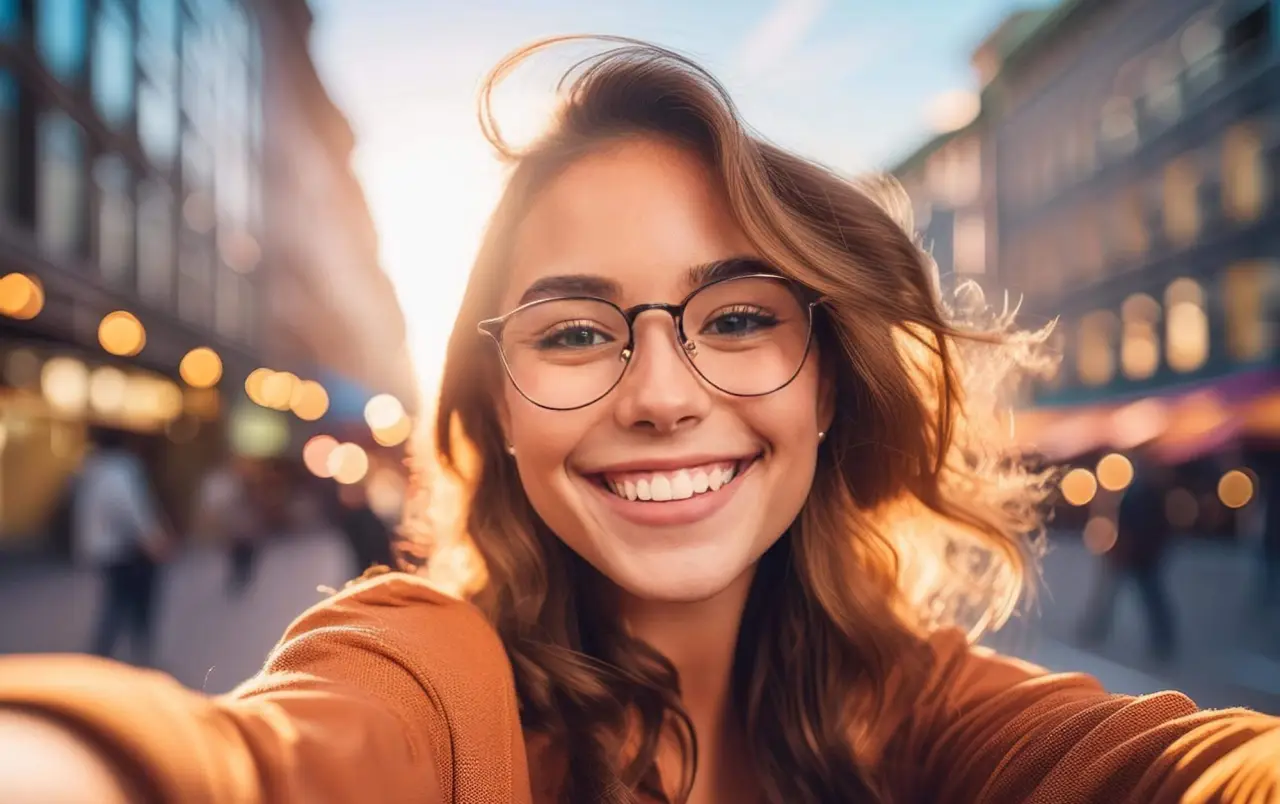
In recent years, AI image generators have gained significant traction in digital content creation, revolutionizing how visuals are crafted. These tools harness artificial intelligence to generate images based on text descriptions, opening the door to creative possibilities for individuals with varying levels of artistic skills. By providing a simple text prompt, users can produce visuals that closely match their vision, eliminating the need for traditional drawing or design expertise. This accessibility democratizes image creation, allowing creators, marketers, and enthusiasts to craft compelling visuals with minimal effort.
At their core, AI image generators employ advanced machine learning algorithms to translate textual inputs into visually coherent imagery. This process makes these tools not only accessible but also practical for a wide range of applications, from designing marketing materials to generating custom artwork for social media. As AI continues to advance, the growing importance of these tools in digital media and communication cannot be overstated, cementing their place as a go-to resource for content creators.
By making image generation more inclusive, these tools are shaping the future of digital art and visual storytelling, empowering users to transform their ideas into reality with just a few words.
Contents
What are AI Image Generators?
In the ever-evolving landscape of digital content creation, AI image generators have emerged as a groundbreaking technology. These tools leverage artificial intelligence to transform simple text prompts into stunning visuals, revolutionizing the way images are created. Whether you’re a seasoned designer or a novice enthusiast, AI image generators offer an accessible and efficient way to produce high-quality images that align with your creative vision.
Brief History of AI Image Generators
The journey of AI image generators began in the early 2010s with the advent of Generative Adversarial Networks (GANs). GANs consist of two main components: a generator that creates images and a discriminator that evaluates them. Through a continuous feedback loop, the generator improves its ability to produce realistic and high-quality images. Over the years, AI image generators have evolved significantly, incorporating new architectures and techniques that enhance their capabilities. Today, tools like DALL-E, Midjourney, and Stable Diffusion represent the cutting edge of this technology, offering users unprecedented creative possibilities.
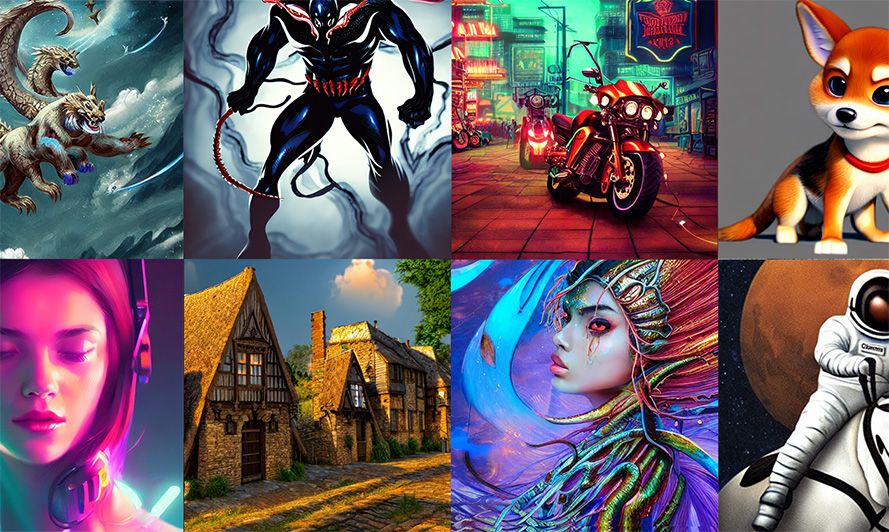
How AI Image Generators Work?
AI image generators rely on advanced machine learning models to transform text prompts into high-quality images. At the heart of these systems are sophisticated algorithms, such as Generative Adversarial Networks (GANs), diffusion models, and transformers, which are trained to interpret the meaning of text and generate corresponding visuals. Each of these models has a unique way of processing information, but their goal is the same: to create images that accurately reflect the descriptions provided by users.
One of the most well-known AI image generators, DALL-E, uses a combination of natural language processing (NLP) and image generation techniques. When a user inputs a text prompt, the model first breaks down the text into numerical data that it can understand. Then, it uses this data to generate an image that aligns with the textual description. The more recent version, DALL-E 3, improves on its predecessors by providing more detailed and accurate visual outputs, often without the need for extensive prompt engineering.
However, an ai generated image has its unique aspects and limitations. While these images offer creative freedom and can interpret complex requests, they may sometimes lack the nuanced detail that traditional image sourcing provides.
Midjourney and Stable Diffusion, two other popular models, also use diffusion techniques to generate images. These models start with random noise and gradually refine the image until it matches the text prompt. Each model offers its unique strengths, with Midjourney known for its artistic quality and Stable Diffusion for its flexibility and open-source nature.
Through these innovative technologies, AI-generated images have become a powerful tool for creators, allowing anyone to bring their ideas to life with just a few words. Whether you’re designing marketing materials, creating personal art, or experimenting with visual storytelling, these models make it easier than ever to turn text into visually compelling images.
Machine Learning and Neural Networks
Machine learning is a subset of artificial intelligence that enables computers to learn from data and improve their performance over time. Neural networks, a key component of machine learning, consist of layers of interconnected nodes or “neurons” that process and transmit information. These networks are particularly effective for image generation tasks, as they can recognize patterns and relationships in visual data. By training on vast datasets, neural networks learn to generate images that match specific text prompts, making them an essential tool for AI image generators.
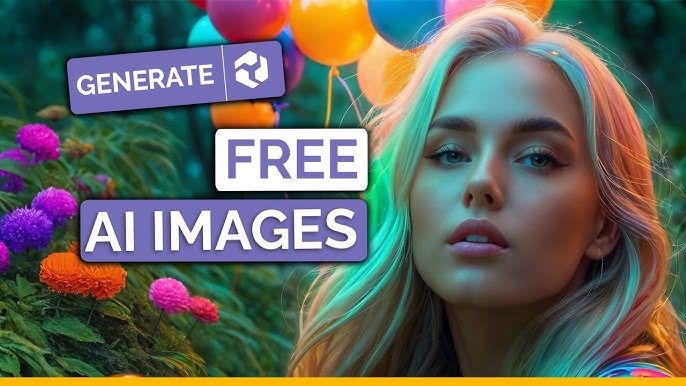
In summary, AI image generators represent a significant advancement in the field of digital content creation. By harnessing the power of machine learning and neural networks, these tools enable users to easily generate ai images that are both high-quality and visually compelling. As the technology continues to evolve, the potential applications for AI generated images will only expand, further transforming the creative landscape.
Best AI Image Generators: A Comprehensive Comparison
When it comes to AI image generation, the best AI image generator is defined by features such as advancements in technology, usability, customization, and the ability to produce realistic images from text prompts. There are numerous tools available, each offering unique features and capabilities. However, Aitubo AI Image Generator stands out from the crowd with its combination of powerful features, ease of use, and impressive output quality. Below, we’ll explore Aitubo along with four other popular AI image generators to help you decide which one is right for your needs.
1. Aitubo AI Image Generator
Aitubo is a robust and versatile ai photo generator designed for both casual creators and professionals. It allows users to generate high-quality images from simple text prompts or enhance uploaded images. With its support for multiple styles such as Anime, Cyberpunk, and Retro, Aitubo offers flexibility and creative control over your visuals. It integrates several advanced models, including Midjourney and Stable Diffusion, ensuring that users can experiment with diverse artistic outputs. Additionally, Aitubo provides watermark-free downloads, high-resolution outputs, and even commercial usage rights, making it ideal for both personal and business use.
Key Features: Text-to-image creation, image enhancement, high-resolution outputs, multiple styles and models, watermark-free downloads.
Pricing: Free plan available with 100 credits, additional plans for more frequent usage.
Best For: Content creators, marketers, and personal projects that need professional-quality visuals with minimal effort.
2. Midjourney
Known for its artistic precision, Midjourney is favored by creators seeking high-quality, photorealistic images. The tool utilizes advanced diffusion techniques to produce visually striking images from text inputs. While it requires a subscription to access its full capabilities, Midjourney's outputs are often considered some of the most detailed in the industry.
Key Features: Photorealistic images, versatile styles, ideal for high-detail artistic work.
Pricing: Starts at $10/month.
Best For: Professional designers and artists seeking top-tier image quality.
3. Adobe Firefly
Part of Adobe's creative suite, Firefly is designed for professionals who need seamless integration with other Adobe products. Its standout feature is the ability to use reference photos for structure or style, making it easy to generate consistent visuals for branding or design projects. Firefly also offers commercial use of its generated images, making it a top choice for businesses.
Key Features: Reference photo generation, integration with Adobe apps, commercial use rights.
Pricing: Free with Adobe's Creative Cloud subscription.
Best For: Designers who rely on Adobe tools for branding, design, and content creation.
4. DALL-E 3 (Microsoft Designer's Image Creator)
DALL-E 3, now accessible via Microsoft’s Designer, continues to impress with its ease of use and integration with ChatGPT for prompt refinement. Its ability to generate detailed images quickly from simple text prompts has made it a popular choice for casual users and professionals alike. Best of all, Microsoft’s platform offers DALL-E 3 as a free AI image generator, making it more accessible and allowing users to create images without any cost.
Key Features: Integration with ChatGPT, quick and easy image generation, no subscription required.
Pricing: Free via Microsoft Designer.
Best For: General users looking for high-quality images with minimal effort.
5. Stable Diffusion (DreamStudio)
Stable Diffusion, particularly through its DreamStudio interface, provides a highly customizable experience. Users can adjust the size, style, and even specify negative prompts to refine their results. This makes it an excellent option for those who need complete control over the final output. Stable Diffusion is also open-source, giving users the ability to run the model locally for greater privacy and control.
Key Features: Customizable settings, negative prompts, open-source availability.
Pricing: Free with credit-based system for extended usage.
Best For: Advanced users who want full control over the image generation process.
While there are many AI image generators on the market, Aitubo AI Image Generator shines for its balance of accessibility, creative flexibility, and commercial usability. Whether you need images for personal projects, marketing campaigns, or business branding, Aitubo offers a user-friendly interface and powerful capabilities. However, for those seeking more specialized tools, options like Midjourney, Adobe Firefly, and DALL-E 3 offer unique advantages depending on your project's needs.
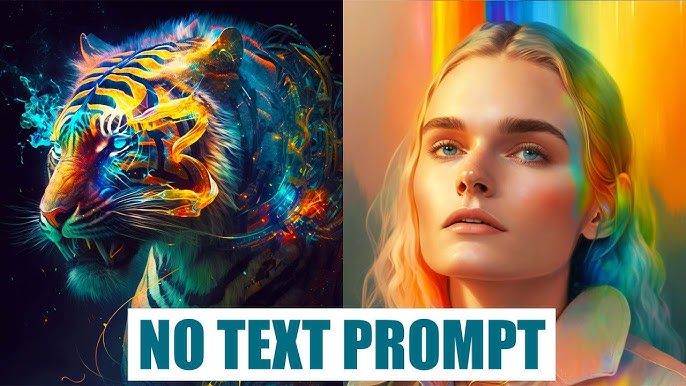
Applications of AI Image Generators
AI image generators have found their way into a broad range of industries, transforming how visuals are created for marketing, design, and personal projects by generating images efficiently. These tools have become essential in modern creative processes, offering users an efficient and accessible way to generate high-quality images from simple text prompts. Let’s explore how different sectors are utilizing these innovations.
Marketing and Digital Content Creation
In marketing, AI image generators are revolutionizing how brands create visuals for campaigns. From social media content to advertisements, businesses can now generate tailored, eye-catching images without relying on traditional design processes. AI tools like Midjourney and DALL-E can quickly produce engaging visuals that align with brand messaging, saving marketers time and resources. Moreover, AI-generated images can be used for everything from website banners to product mockups, offering a level of flexibility and customization previously unavailable to those without extensive design skills.
These tools also play a significant role in digital marketing, where speed and relevance are critical. For example, AI generators can produce social media graphics in minutes, allowing brands to keep up with fast-moving trends and engage their audience with timely content. The ability to create personalized visuals on demand gives marketers a competitive edge in attracting attention and boosting engagement.
Graphic Design and Branding
For designers, AI image generators offer a new way to explore creative possibilities. Whether it’s generating logos for startups or creating unique backgrounds for websites, AI tools like Adobe Firefly and Stable Diffusion provide endless options. These tools can be particularly helpful for small businesses and entrepreneurs who may not have the budget for professional design services. Instead, they can use AI to create polished visuals that reflect their brand identity.
Users can select various 'image style' options to produce customized artwork, modifying attributes like color and lighting to achieve specific designs.
Beyond logos and branding, AI image generators are also being used in more artistic projects, such as personalized art and illustrations. With various styles and models available, users can generate everything from minimalistic designs to highly detailed, photorealistic artwork. This allows for a wide range of applications, from creating custom gifts to decorating personal spaces.
To summarize, the versatility of AI image generators makes them a valuable tool across industries. Whether it’s for marketing, design, or personal use, these tools empower users to create visually appealing content with minimal effort, pushing the boundaries of creativity in the digital age.
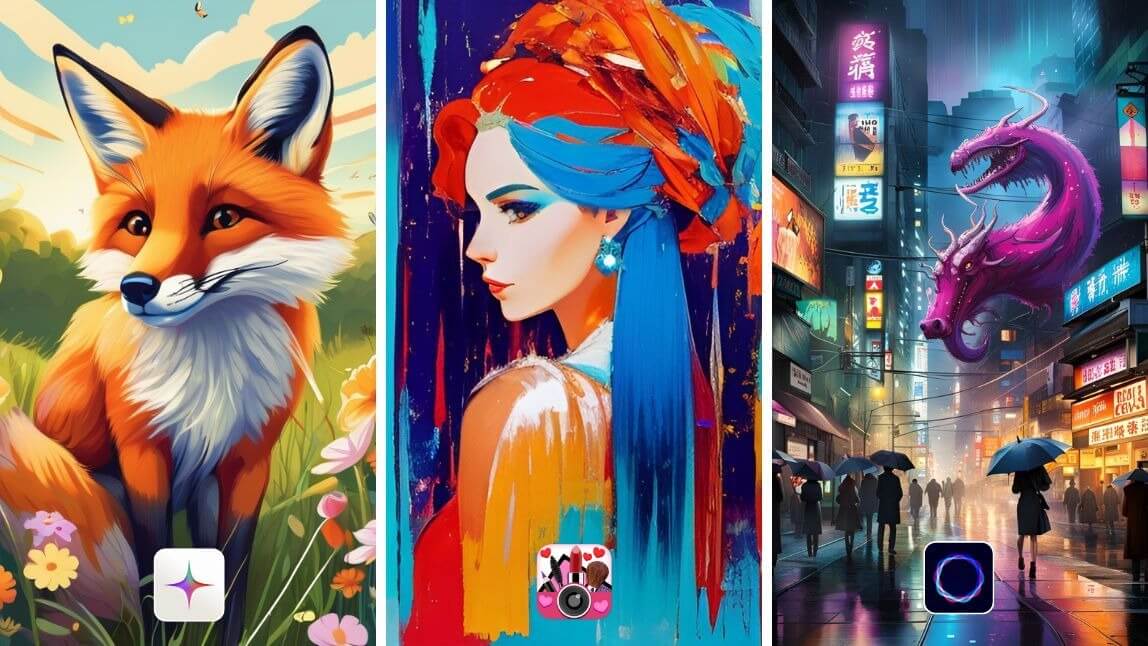
Aitubo AI Image Generator
The Aitubo AI Image Generator is a cutting-edge tool designed to transform text prompts or uploaded images into high-quality visuals. Whether you're a content creator, designer, or someone looking to add a creative touch to personal projects, Aitubo offers an intuitive, user-friendly experience with a range of powerful features that set it apart from other image generators.
Key Features of Aitubo AI Image Generator
At the heart of Aitubo is its text-to-image creation functionality. Users can generate detailed images simply by providing a brief description. The AI works behind the scenes, interpreting the input and transforming it into visuals that match the user's vision. Aitubo supports a variety of styles, including Anime, Cyberpunk, and Retro, giving users the flexibility to explore different creative avenues.
In addition to text-based generation, Aitubo also offers image-to-image enhancement. This feature allows users to upload existing images and apply various enhancements or artistic transformations, such as colorizing old photos or converting pictures into unique avatars. Whether for personal use or professional projects, the tool's versatility ensures that users can achieve the exact look they desire.
Another standout aspect of Aitubo is its high-resolution outputs, which make the generated images suitable for both digital and print formats. Whether you're crafting visuals for social media, marketing materials, or even personal gifts, Aitubo's high-quality results help elevate the final product.
Diverse Styles and Watermark-Free Downloads
Aitubo integrates multiple image generation models, including FLUX, Midjourney, and Stable Diffusion, which are known for producing visually stunning results. The platform supports a range of artistic styles, from realism to abstract, ensuring that users can experiment and find the perfect aesthetic for their projects.
One of the most appealing features for users is the ability to download images without watermarks. This means users can freely share or use their creations without restrictions, making Aitubo an ideal choice for those looking to maintain a professional touch in their work.
In brief, the Aitubo AI Image Generator stands out as a versatile and powerful tool for anyone seeking to generate high-quality, creative visuals. With its intuitive interface, diverse styles, and watermark-free downloads, Aitubo provides both casual users and professionals with an easy way to bring their ideas to life.
How to Get Best Results from AI Image Generators?
When working with AI image generators, crafting effective prompts is key to achieving high-quality results. The following tips can help you make the most of these powerful tools, ensuring that your creative vision is accurately represented in the generated visuals.
1. Be Specific with Your Prompts
The more detailed and specific your prompts are, the more likely the AI will generate images that match your expectations. Instead of using vague descriptions like "a sunset," try "a vibrant sunset over the ocean with orange and purple hues, palm trees silhouetted in the foreground." This level of specificity helps the AI interpret your vision more clearly and produces images that align with your desired outcome.
2. Experiment with Styles and Settings
Each AI image generator offers different styles and customization options, such as realism, anime, or abstract. Take the time to experiment with various settings to discover what works best for your project. You can also adjust parameters like lighting, color schemes, or camera angles to refine your results further. For example, trying out prompts like "retro 80s neon aesthetic" or "watercolor painting of a cityscape" can drastically change the final output, giving you a range of artistic expressions.
3. Iterate and Refine
Generating high-quality images often requires a bit of trial and error. After your first attempt, review the results and tweak your prompt to refine the output. Small adjustments, such as rephrasing parts of the description or changing the focus of the prompt, can lead to significant improvements. For instance, specifying "a close-up shot" or removing unwanted elements using negative prompts like "no buildings in the background" can help fine-tune your visuals.
By understanding the strengths and limitations of the AI tools you're using and applying these best practices, you can maximize their potential and create stunning images that accurately reflect your vision.
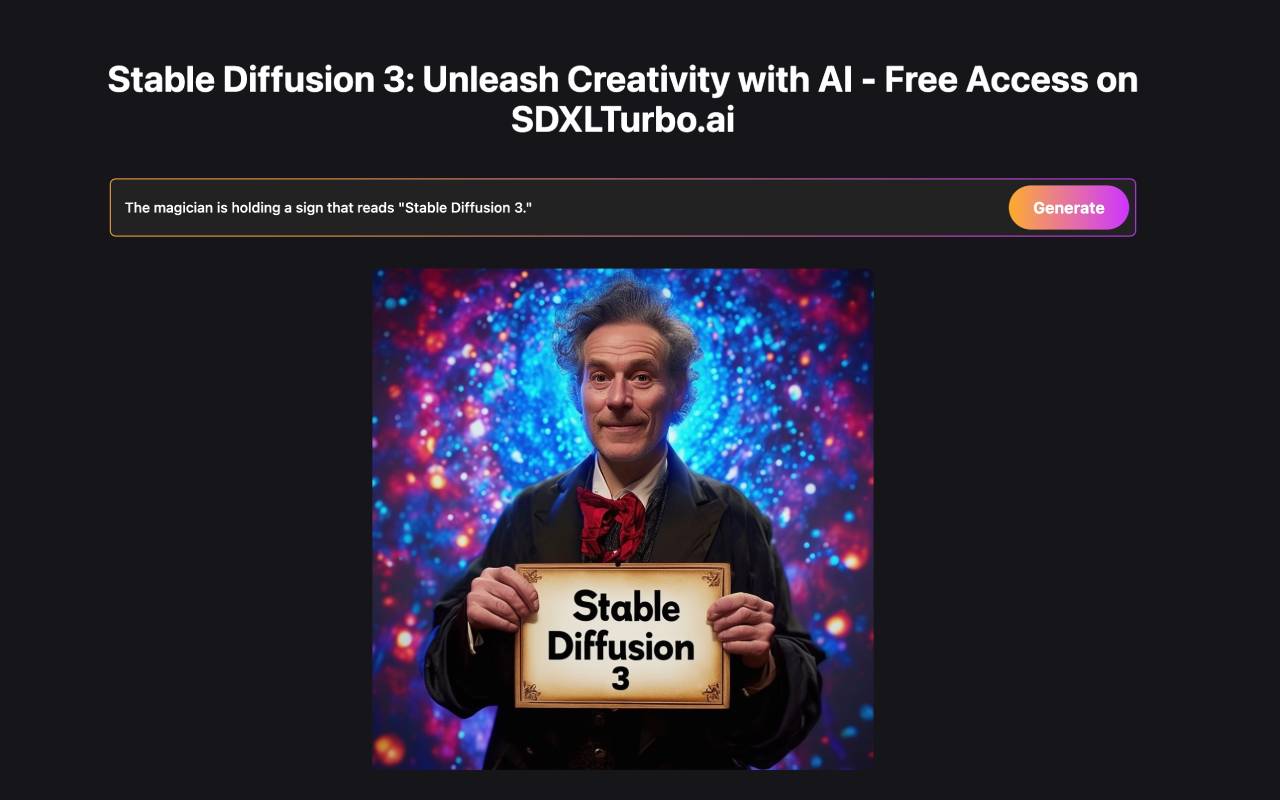
The Future of AI Image Generation
As AI image generation continues to evolve, the future looks promising with numerous advancements on the horizon. In the coming years, these tools are expected to become even more sophisticated, offering enhanced capabilities that will significantly impact various creative industries. From digital marketing to graphic design, AI-driven technologies are set to revolutionize how content is created and consumed.
One of the most anticipated trends in AI image generation is the refinement of hyper-realistic visuals. Tools like Midjourney and DALL-E have already made significant strides in producing life-like images, but future advancements will take this to a new level. This will be particularly valuable in industries such as advertising, film production, and even virtual reality, where realistic visuals are crucial. As AI becomes more adept at understanding nuances in prompts, users can expect even more precise and visually compelling outputs, blurring the lines between AI-generated art and human-created work.
Another exciting prospect is the increasing integration of AI with other creative tools. For example, AI is likely to work more seamlessly with video editing software, allowing creators to not only generate images but also craft animations and short films directly from text prompts. This synergy will open up new possibilities for artists, designers, and marketers, enabling them to produce dynamic content with minimal effort. Additionally, as AI continues to advance, it is expected to become more user-friendly, democratizing access to creative tools and allowing individuals without specialized skills to generate professional-grade visuals.
The future of AI image generation promises to bring a new wave of innovation, pushing creative boundaries and transforming industries by making content creation faster, more accessible, and more diverse.
Frequently Asked Questions (FAQs)
1. What is Aitubo AI Image Generator, and how does it work?
Aitubo AI Image Generator is a versatile tool that allows users to create high-quality visuals by simply entering text prompts or uploading images. Using advanced AI models like Midjourney and Stable Diffusion, the platform interprets the input and generates corresponding images, offering multiple artistic styles and models for customization.
2. What styles and models are available in Aitubo AI Image Generator?
Aitubo offers a wide range of styles such as Anime, Cyberpunk, Retro, and Realism. The platform integrates multiple models like FLUX and Stable Diffusion, allowing users to experiment with different aesthetics to find the perfect fit for their creative projects.
3. Is there a free version of Aitubo AI Image Generator, and what does it include?
Yes, Aitubo provides a free plan for new users. It comes with 100 credits, allowing up to 50 image generations. This plan enables users to explore its features, including text-to-image creation and image enhancements, without any initial cost.
4. Can I use Aitubo-generated images for commercial purposes?
Yes, images created with Aitubo AI Image Generator are free of watermarks and can be used for both personal and commercial projects. Whether you're designing logos, social media content, or marketing materials, Aitubo's outputs are suitable for professional use.
5. How does Aitubo ensure the quality of generated images?
Aitubo delivers high-resolution images that are suitable for both digital and print purposes. With support for various models and styles, the tool ensures that users receive rich, detailed visuals that meet professional standards, whether for personal or business use.
